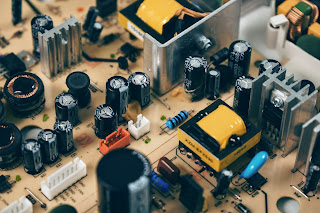What Is Transformer | working principle | advantage| stepup and step down
On Completion of this blog, you would be able to know
A. Definition of transformer
B. Transformer and its principle
C. Step-up and step-down transformer
D. Advantages of transformer
A) Definition of transformer
A transformer is a static (stationary) A.C. machine which transfers the electric power (energy) from one electric circuit to another electric circuit with same frequency. It works on mutual induction (Electromagnetic induction) principle.
Or
A static device used for transforming electrical energy from one A.C. circuit to another, without any change in the frequency, is called a transformer.
B) Transformer and its principle
Transformer
1) Transformer is changes the voltage from high to low or low to high with corresponding increase or decrease in current.
2) If it increases the voltage, then it is termed as step up transformer and if it decreases the voltage, then. is termed as step down transformer.
3) A transformer does not produce electricity and neither it affects the frequency nor the power.
Working principle
1) According to the Faraday's Laws of electro magnetic induction, a current carrying conductor is surrounded by a magnetic field.
2) If a switch is placed in the circuit and it is put to ON and OFF alternately, then the magnetic field around the conductor will start to vary.
3) Now if a second conductor connected with a galvanometer is placed near the first conductor, then it will cut the varying magnetic field of the first conductor.
4) Thus, an e.m.f is induced in the second conductor which is verified by the deflection of galvanometer.
5) In other words, the transformer works on the principle of mutual induction. Hence P is called the primary and S the secondary circuit.
6) A transformer does not work on D.C. since the magnetic flux must be varied so as to obtain mutually induced e.m.f.
7) If the coils are used in place of conductors, then the coil connected to the source of supply is called a primary coil, while the other coil, from which the output is taken is called a secondary coil.
8) If A.C. is supplied to a transformer, then an alternating magnetic field is set up around the primary coil, without making and breaking the circuit by a switch.
9) The primary and secondary coils are wound on laminated cores.
10) The A.C. e.m.f. applied to the primary coil produces an alternating magnetic field.
11) The field is cut by the secondary coil resulting in an e.m.f. to be induced in it.
12) The secondary voltage depends on the ratio of the secondary turns to the primary
turns.
C) Advantages of using Transformer in A.C. circuit
1) The transmission of electrical energy at high voltage has become possible with the use of transformers and which is much economical.
2) It is a static device and there are no movable parts in it hence it requires very little care and maintenance. O It can easily step-up or step-down the voltage.
3) It requires very little maintenance during its operation.
4) It is easy to insulate the windings at high voltages with small current.
5)It has a high efficiency.
6) It can work for a long period.
D) Step-up transformer & Step-down Transformer
Step-up transformer
1) The transformer which steps-up the given voltage is called a step up transformer, as shown in figure.
2)A low voltage is applied to its primary winding and a high voltage is obtained from the secondary winding.
3) If the applied voltage is 110 volts then 220 volts can be obtained from the secondary winding.
4) The number of primary turns is kept lower than the number of secondary turns.
Step-down Transformer
1)The transformer which steps down the given voltage is called a step-down transformer as shown in figure.
2) A high voltage is applied to its primary winding and a low voltage is obtained from the secondary winding.
3) The number of primary turns is kept greater than the number of secondary turns. Night lamp's transformer is a step-down type transformer in which 230 volts are stepped down to 6 volts.
If you have any doubts please comment in below👇







Post a Comment
0 Comments